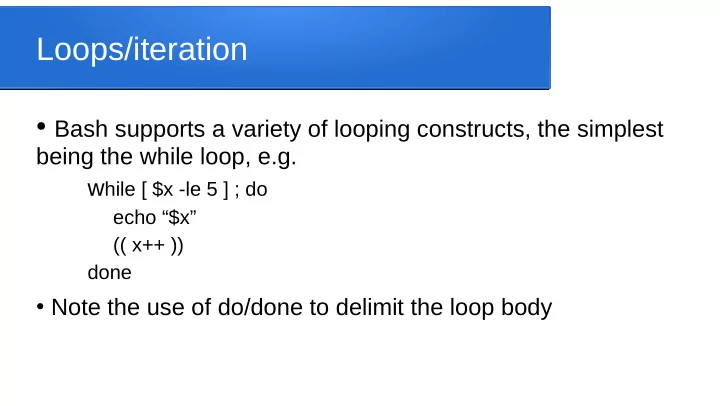

Loops/iteration ● Bash supports a variety of looping constructs, the simplest being the while loop, e.g. w hile [ $x -le 5 ] ; do echo “$x” (( x++ )) done ● Note the use of do/done to delimit the loop body
For loops: C style ● There are two main styles of for loop supported ● C-like for loops are available with the following syntax for (( x=1; x<10; x++ )) ; do echo “$x” done
For loops: the in keyword ● The other style of for loop allows you to iterate across a set of values, using the general style “for X in Y” ● The set of values can be hardcoded, e.g. for x in a b c ; do ● The set of values can be words in a text string, e.g. for x in $text; do ● The set of values can be the elements of an array, e.g. the command line arguments ($@) for x in $@; do
Iterating across lines of text ● We often find our code going through lines of text (files, output from other programs/function calls, etc) ● We set the variable IFS to specify the seperator we want to use, then use the usual “in” syntax, e.g. IFS=$’\n’ for line in $text; do echo “$line” done
Reading file content ● With the < redirect, we can read file contents, e.g. echo “enter a filename” read filename if [ -f $filename ] ; then while IFS= read line; do echo “$line” done else echo “sorry, file $filename not found” fi
Reading command output ● Similarly, we can read the output from a command, e.g. while IFS= read line; do echo “$line” done <<< $(ls)
Recommend
More recommend